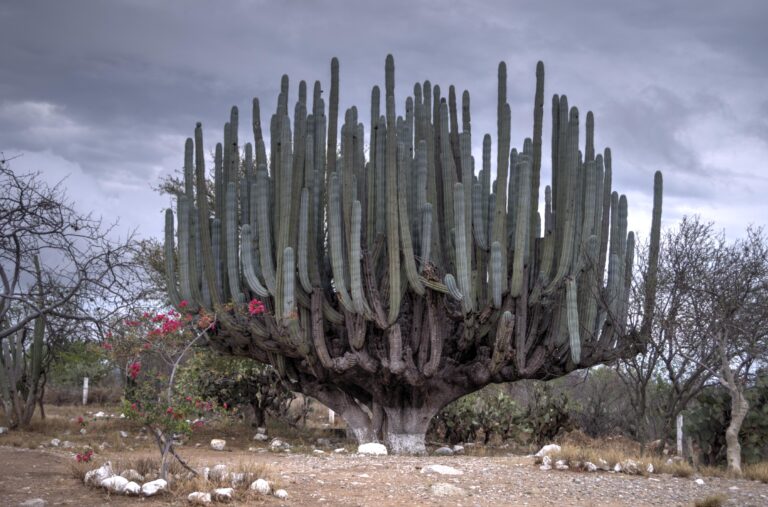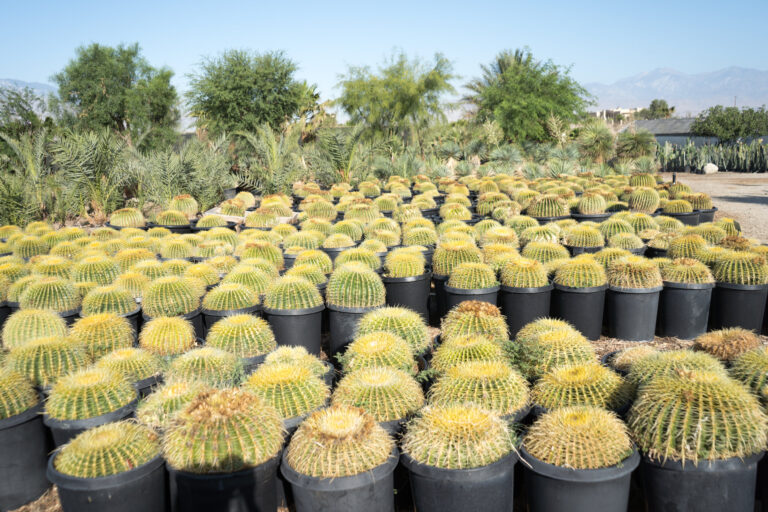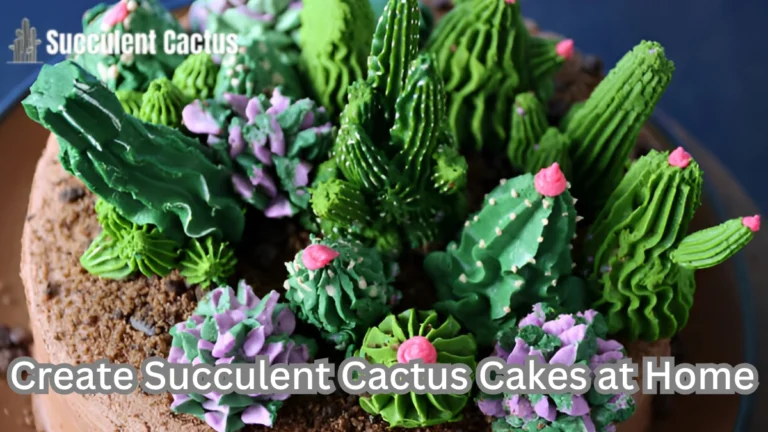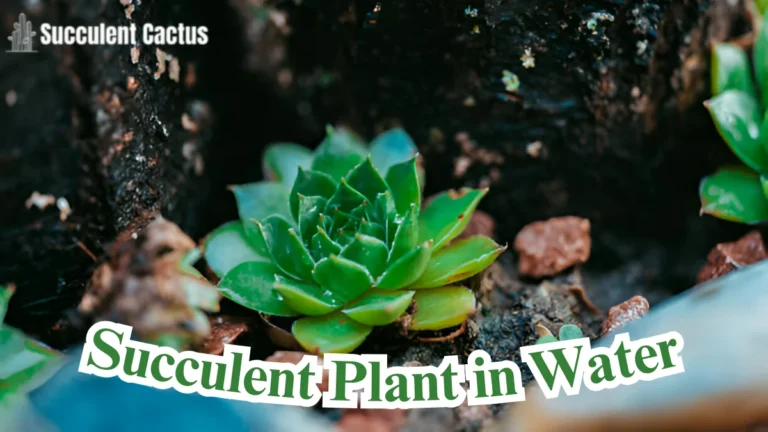Types of Cactus Succulent: A Comprehensive Guide
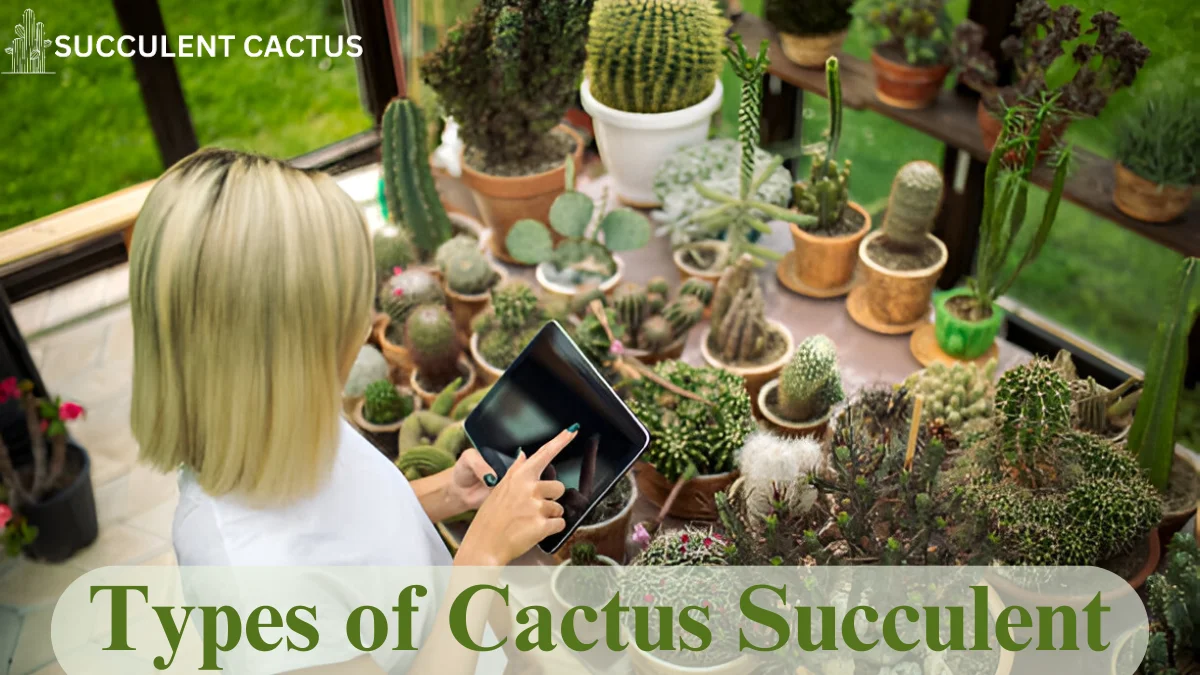
Cacti and succulents are fascinating plants known for their unique shapes, textures, and adaptability. Whether you’re a seasoned collector or a beginner, understanding the types of cactus succulent is essential for creating a stunning display and providing proper care. In this guide, we’ll explore the diverse types, their characteristics, and how to care for them.
Understanding Cactus Succulents
What Are Cactus Succulents?
Cactus succulents are plants that store water in their stems, leaves, or roots, allowing them to thrive in arid conditions. While all cacti are succulents, not all succulents are cacti. The key difference lies in their structure, particularly the presence of areoles—a feature unique to cacti.
- Cactus Characteristics:
- Areoles (small, round, cushion-like structures).
- Spines instead of leaves.
- Thick, fleshy stems for water storage.
Example: The Saguaro cactus (Carnegiea gigantea) is a classic example of a true cactus.
How Do They Differ From Other Succulents?
Succulents like Aloe Vera or Echeveria lack areoles, though they share the ability to store water. They often have softer, fleshy leaves and are more varied in shape and color.
Why Are Cactus Succulents Popular?
Cactus succulents are beloved for their:
- Low-maintenance nature.
- Ability to thrive indoors and outdoors.
- Wide variety of shapes, sizes, and colors.
They’re perfect for modern homes and offices, where space and time for plant care might be limited.
Popular Types of Cactus Succulent
Miniature Cacti
Miniature cacti are compact and perfect for small spaces like desks or shelves.
- Examples:
- Moon Cactus (Gymnocalycium mihanovichii): Known for its brightly colored grafted top.
- Bunny Ear Cactus (Opuntia microdasys): Features paddle-like segments covered in tiny spines.
Columnar Cacti
These tall, cylindrical cacti are iconic and often used as statement pieces.
- Examples:
- San Pedro Cactus (Echinopsis pachanoi): A fast-growing, sacred cactus from South America.
- Blue Torch Cactus (Pilosocereus azureus): A striking cactus with a bluish hue.
Round or Barrel Cacti
These cacti are round and ribbed, resembling a barrel.
- Examples:
- Golden Barrel Cactus (Echinocactus grusonii): A favorite for gardens and xeriscapes.
- Parodia magnifica: Known for its symmetrical shape and yellow flowers.
Types of Cactus Succulent Based on Regions
Cactus succulents are found all over the world, from the harsh deserts to tropical rainforests. Their adaptability to different climates and environments has led to a wide variety of species. Let’s take a closer look at the types of cactus succulents based on the regions they are typically found in.
Desert Cacti
Desert cacti are the iconic plants associated with the arid, sun-scorched landscapes of deserts. These cacti are specifically adapted to survive in the extreme heat and drought conditions typical of desert ecosystems. The key adaptations of desert cacti include thick, water-storing stems, spines to deter herbivores, and shallow roots that spread out to absorb as much water as possible when it rains.
Key Adaptations:
- Water Storage: Desert cacti have large, swollen stems that store water, allowing them to survive long periods without rainfall.
- Spines Instead of Leaves: In order to conserve moisture, many desert cacti have modified leaves that turn into spines. These spines reduce water loss by providing shade and discouraging animals from eating the cactus.
- Shallow Roots: Cactus roots often spread widely near the surface of the soil, allowing them to absorb rainwater quickly when it does fall.
Examples:
- Prickly Pear (Opuntia species): One of the most recognizable desert cacti, the prickly pear has broad, flat pads covered in spines. Some species produce edible fruits called “tunas.”
- Saguaro (Carnegiea gigantea): Known for its tall, tree-like shape, the Saguaro is the iconic cactus of the American Southwest. It can grow up to 40-60 feet tall and live for over 150 years.
- Cholla Cactus (Cylindropuntia species): Cholla cacti have segmented stems that easily detach and latch onto anything they come into contact with, making them a unique and dangerous cactus.
Forest Cacti
While desert cacti thrive in dry environments, forest cacti are adapted to the more humid and shaded conditions found in tropical and subtropical forests. These cacti often have soft, green stems and less pronounced spines compared to desert cacti. Some species of forest cacti are epiphytes, meaning they grow on other plants like trees to access light in the dense forest canopy.
Key Adaptations:
- Epiphytic Growth: Forest cacti, such as the Christmas cactus, often grow on tree trunks or branches, using their roots to anchor themselves in the crevices of bark or other surfaces.
- Water Storage in Stems: Like desert cacti, forest cacti are still succulents and have the ability to store water in their stems, but they require more frequent moisture than their desert counterparts.
- Low Light Tolerance: Forest cacti are adapted to thrive in filtered sunlight, and many of them bloom beautifully during the winter months when light levels are lower.
Examples:
- Christmas Cactus (Schlumbergera spp.): A popular houseplant, the Christmas cactus blooms with colorful flowers during the holiday season, making it a favorite for indoor gardeners.
- Orchid Cactus (Epiphyllum spp.): Known for their large, exotic flowers, orchid cacti are often grown as ornamental plants. They are epiphytic and thrive in humid environments.
- Rhipsalis (Rhipsalis spp.): A unique forest cactus, Rhipsalis is native to the tropical forests of Central and South America. It has long, thin stems and delicate white flowers.
Hybrid Cactus Succulents
Hybrid cacti are the result of intentional or natural crossbreeding between different cactus species. These hybrids can combine the best features of their parent species, such as unique flower colors, growth habits, or resilience to environmental conditions. Hybrid cacti have become increasingly popular in both indoor and outdoor gardening due to their aesthetic appeal and easier care requirements.
Key Adaptations:
- Variety of Shapes and Colors: Hybrid cacti can have diverse characteristics from their parent species, such as multicolored flowers, variegated stems, and unusual growth forms.
- Increased Resistance: Many hybrids are bred for improved resistance to pests, diseases, and harsh growing conditions.
- Unique Aesthetic Appeal: Hybrid cacti often have an attractive appearance, with unusual spines or interesting textures that make them highly desirable for collectors.
Examples:
- Moon Cactus (Gymnocalycium mihanovichii): A grafted hybrid featuring a bright, colorful top section, often in shades of pink, red, or orange. The top is grafted onto the rootstock of another cactus species, such as Hylocereus, to ensure the plant thrives.
- Chimera Cactus: This hybrid cactus can exhibit both variegated and unique colors, such as multi-colored spines, striped stems, or two-tone flowers. The chimera cactus is typically a result of a genetic mutation that causes different colors or features within a single plant.
- Cactus Hybrids for Commercial Use: Some cactus hybrids are specifically bred for the commercial market. These hybrids may feature colorful flowers, unique shapes, or smaller sizes, making them ideal for use as ornamental plants.
Unique and Rare Types of Cactus Succulent
Cactus succulents come in a wide variety of forms, colors, and sizes, but there are some particularly rare and unique types that have captured the interest of collectors and enthusiasts worldwide. These cacti are prized for their unusual growth patterns, vibrant colors, or scarcity in the wild.
Variegated Cacti
Variegation refers to the appearance of different colors or patterns in the plant’s tissue. While variegation is common in many plants, it is particularly sought after in cacti due to its rarity and aesthetic appeal. Variegated cacti can have streaks or patches of white, yellow, or pink in addition to the usual green color.
Examples:
- Variegated Opuntia (Opuntia spp.): A striking variety of the common prickly pear cactus, variegated Opuntia can have yellow or white streaks mixed with green. This rare variation is highly prized by collectors.
- Variegated Echinopsis (Echinopsis spp.): Some species of Echinopsis are naturally variegated, displaying both green and white or yellow coloring. These cacti are rare and highly sought after for their eye-catching appearance.
Crested and Monstrose Cacti
Crested and monstrose cacti are the result of genetic mutations that cause unusual, often twisted, and distorted growth patterns. These cacti may have flattened, twisted, or contorted shapes, making them look dramatically different from their standard counterparts. They are considered highly collectible due to their unusual appearance.
Examples:
- Crested Cereus (Cereus spp.): A crested variety of the common Cereus cactus, it grows in a fan-like shape with numerous branching ridges. This unique shape is the result of a mutation that causes the cactus to grow in a twisted form.
- Monstrose Echinocactus (Echinocactus spp.): This cactus displays irregular growth, often creating a bumpy, irregular surface instead of the typical smooth, rounded appearance of most cacti. The monstrose Echinocactus has an attractive, warty texture.
Spineless Cacti
Spineless cacti are a popular choice for gardeners who love the look of cacti but want to avoid the pain of prickly spines. These cacti lack the sharp, defensive spines that characterize many cactus species, making them safer to handle while still retaining the aesthetic qualities of traditional cacti.
Examples:
- Spineless Prickly Pear (Opuntia spp.): Some varieties of prickly pear cactus have been bred to be spineless. These plants still produce the same broad pads and colorful flowers as the spiny versions but without the painful spines.
- Totem Pole Cactus (Pachycereus schottii): This large, columnar cactus is virtually spineless, making it a unique addition to any cactus collection. It has a smooth, green stem and a striking appearance.
Caring for Cactus Succulents
Caring for cactus succulents is relatively simple, but there are a few important factors to consider when ensuring they thrive. By understanding their needs in terms of light, water, soil, and general care, you can keep your cactus collection healthy and beautiful for years to come.
Light Requirements
Cactus succulents require plenty of bright, direct sunlight to grow well. Most species thrive in full sunlight, but some, especially forest cacti, prefer a bit of shade or filtered light. It is important to provide them with at least 4-6 hours of sunlight per day to maintain healthy growth.
Tips for Light:
- Indoor Cacti: Place your cactus near a sunny window or under grow lights if natural sunlight is insufficient.
- Outdoor Cacti: If you’re growing your cacti outdoors, ensure they’re positioned in a sunny spot, ideally where they can get full sunlight for most of the day.
Common Problem:
- Etiolation: If your cactus is not receiving enough sunlight, it may become elongated and pale, a condition known as etiolation.
Soil and Potting
The right soil mix is crucial for cactus health. Cacti need well-draining soil that prevents water from sitting around the roots, which can lead to root rot. You can either purchase a specialized cactus mix or create your own by adding sand or perlite to standard potting soil.
Potting Tips:
- Choose a pot with drainage holes to allow excess water to escape.
- Repot your cactus every
2-3 years to refresh the soil and give the roots more space to grow.
Watering Practices
Overwatering is one of the most common causes of cactus death. Cacti are adapted to survive in dry conditions and should be watered only when the soil has dried out completely. During the growing season (spring and summer), cacti may need more frequent watering, but in the winter, their watering needs are significantly reduced.
Watering Tips:
- Use the “Touch Test”: Stick your finger into the soil to check moisture levels before watering. If the soil feels dry, it’s time to water.
- Winter Dormancy: Reduce watering in the winter, as most cacti go dormant during the colder months.
By following these guidelines, you’ll be well on your way to keeping your cactus succulents healthy and thriving in your home or garden.
Common Problems with Cactus Succulents
While different types of cactus succulent are generally easy to care for, they can still face a variety of issues that can affect their health and appearance. Understanding these problems and how to address them will help you keep your plants thriving.
Overwatering Issues
Overwatering is one of the most common problems for cactus succulents, as they are highly sensitive to excessive moisture. Unlike other plants, cacti do not thrive in wet soil. When overwatered, the roots can rot, leading to yellowing and wilting of the cactus. Overwatering can also cause fungal infections.
Signs of Overwatering:
- Soft, mushy stems
- Yellowing or browning leaves
- Root rot, which may emit a foul smell
- Drooping or wilting despite the soil being wet
How to Prevent Overwatering:
- Always check the soil moisture before watering by inserting your finger into the soil or using a moisture meter.
- Use well-draining soil and pots with drainage holes to allow excess water to escape.
- Reduce watering frequency in the winter months when the cactus is dormant.
Pests and Diseases
Cacti are relatively pest-resistant, but they can still attract a variety of insects, including mealybugs, aphids, scale insects, and spider mites. These pests can damage the cactus, sucking out sap and leaving the plant vulnerable to diseases.
Common Pests:
- Mealybugs: These pests appear as white, cotton-like masses and can cause stunted growth and yellowing.
- Scale Insects: Scale insects look like small bumps on the cactus. They can cause yellowing and a general decline in the plant’s health.
- Aphids and Spider Mites: These pests can also affect cactus succulents, leading to wilting and yellowing leaves.
How to Deal with Pests:
- Remove pests manually using a soft brush or cotton swab dipped in rubbing alcohol.
- Apply insecticidal soap or neem oil to combat infestations.
- For severe infestations, consider using a systemic insecticide.
Sunburn
While cacti need plenty of sunlight, too much exposure, especially during extreme heat or direct midday sun, can cause sunburn. The symptoms of sunburn in cacti are brown, crispy spots on the plant’s surface, which are typically found on the top or side of the cactus exposed to the most sun.
Signs of Sunburn:
- Brown or white patches on the cactus
- Dry, shriveled areas on the cactus skin
- Leaves or stems that become soft or mushy
How to Prevent Sunburn:
- Gradually acclimate cacti to outdoor conditions if they were previously grown indoors.
- Use a shading cloth or place the cactus in a location with partial sunlight during the hottest parts of the day.
- Move your cacti to a more shaded area during particularly hot spells.
Propagating Cactus Succulents
Propagating cactus succulents is a rewarding way to expand your plant collection and share these unique plants with others. Cactus propagation can be done through several methods, including seed sowing, stem cuttings, and offsets.
Propagation by Stem Cuttings
Stem-cutting propagation is one of the most popular and effective methods for cactus propagation. It involves cutting a healthy part of the cactus and allowing it to form roots in soil or water. This method works best for cacti with thick, fleshy stems.
Steps for Propagating by Stem Cuttings:
- Choose a healthy cactus and select a stem or branch to cut.
- Use a sharp, sterilized knife or pruning shears to make a clean cut.
- Allow the cutting to callus over for several days to prevent rot.
- Place the cutting in well-draining soil, ensuring it is upright.
- Water sparingly until roots develop, typically in 2-4 weeks.
Propagation by Offsets
Many cactus species, especially those with multiple stems, produce offsets or “pups.” These smaller plants grow at the base of the main cactus and can be removed and planted on their own. This is a natural form of reproduction for many cacti.
Steps for Propagating by Offsets:
- Identify healthy offsets attached to the main cactus.
- Gently twist or cut the offset from the parent plant.
- Allow the offset to dry out for a few days to prevent rotting.
- Plant the offset in fresh, well-draining soil.
- Water the new plant lightly and place it in a bright spot with indirect sunlight.
Propagation by Seed
Cactus seeds are tiny, but they are another way to propagate cacti. Growing cactus from seed takes more patience and time compared to other methods, but it can be highly rewarding.
Steps for Propagating by Seed:
- Fill a shallow tray with a mixture of cactus soil and sand.
- Sprinkle cactus seeds evenly across the surface.
- Lightly mist the surface with water and cover the tray with plastic or glass to retain humidity.
- Place the tray in a warm, sunny location and keep the soil moist but not waterlogged.
- Once seedlings appear, transplant them into individual pots with well-draining soil.
Best types of cactus succulent for Beginners
If you’re new to cactus gardening, it’s important to start with varieties that are easy to care for and forgiving of beginner mistakes. Many low-maintenance species can help you develop your cactus gardening skills.
Popular Types of Cactus Succulent for Beginners
Certain types of cactus succulent are known for their resilience and ease of care. These varieties are a great choice for beginners, as they tolerate a range of conditions and don’t require constant attention.
Examples:
- Barrel Cactus (Ferocactus spp.): Barrel cacti are slow-growing but hardy plants that thrive in well-draining soil and full sunlight. They don’t require much water and can survive in dry conditions.
- Ball Cactus (Parodia spp.): These compact cacti are perfect for beginners because they require minimal care and bloom beautiful flowers when mature. They also have a spherical shape that makes them highly attractive.
- Prickly Pear Cactus (Opuntia spp.): This popular cactus is easy to grow and can survive in many different environments. It has a distinctive flat pad shape and can produce vibrant flowers and fruits.
Low-Maintenance Cacti for Beginners
For those who don’t have a lot of time to dedicate to cactus care, there are a few types of cactus succulent that are particularly forgiving and easy to maintain.
Examples:
- Zebra Cactus (Haworthia attenuata): A small, attractive cactus, the Zebra Cactus is ideal for beginners because it doesn’t require frequent watering or special conditions to thrive.
- Moon Cactus (Gymnocalycium mihanovichii): As a hybrid, the Moon Cactus is grafted onto another cactus for support and requires very little care, making it perfect for novice gardeners.
Cacti That Thrive Indoors
Indoor cacti are a great option for people with limited outdoor space. These cacti can thrive in low-light conditions and are perfect for placing on windowsills, desks, or counters.
Examples:
- Golden Barrel Cactus (Echinocactus grusonii): Known for its vibrant yellow spines, the Golden Barrel Cactus is a great choice for indoor spaces. It can survive with minimal watering and indirect sunlight.
- Claret Cup Cactus (Echinocereus triglochidiatus): This small cactus produces beautiful red flowers and is ideal for growing indoors in containers.
Decorating with Cactus Succulents
Cactus succulents aren’t just functional; they also make great decorative elements in your home and garden. From minimalist arrangements to vibrant displays featuring different types of cactus succulent, there are countless ways to incorporate these unique plants into your décor.
Indoor Cactus Arrangements
Indoor cactus arrangements can be both stylish and low-maintenance. By grouping different types of cactus succulent together, you can create a unique, eye-catching display that doesn’t require constant attention.
Tips for Indoor Arrangements:
- Choose a variety of cactus types with different heights and textures for an interesting look.
- Use stylish pots or containers that complement your home décor.
- Place your cacti near windows to ensure they get enough sunlight.
Cactus in Outdoor Gardens
Outdoor cactus gardens are perfect for adding texture and color to your yard, especially in arid or desert climates. Cacti can be grouped in beds, placed in pots, or even used as focal points in rock gardens.
Design Tips:
- Use rocks, gravel, or pebbles as a base to help with drainage and enhance the desert aesthetic.
- Mix cactus varieties with drought-tolerant plants to create a cohesive desert-inspired garden.
- Create a dramatic effect by grouping larger cacti, like Saguaros or Agaves, with smaller varieties.
Cactus in Terrariums
Cacti are perfect for terrariums due to their small size and low-maintenance nature. These miniature gardens can be displayed on desks, shelves, or tables, adding a touch of nature to any space.
Terrarium Tips:
- Choose small, compact cactus species for your terrarium, such as the Ball Cactus or the Golden Barrel.
- Use clear glass containers to allow maximum light exposure.
- Add decorative elements like sand, rocks, and small figurines for a personalized touch.
Cactus Succulent Care for All Seasons: Tips for Different Types of Cactus Succulent
Cactus succulents have specific care requirements depending on the time of year. In this section, we’ll explore the best practices for caring for your cactus during each season.
Spring and Summer Care
During the growing season, cactus succulents need more frequent watering, especially
if they’re actively growing. However, it’s still important not to overwater them.
Spring and Summer Tips:
- Water regularly but ensure the soil dries out completely between waterings.
- Keep cacti in full sunlight or near a bright window.
- Fertilize monthly with a balanced, diluted fertilizer.
Fall and Winter Care
Cacti slow down their growth during the fall and winter months. As a result, they need less water and fewer nutrients.
Fall and Winter Tips:
- Reduce watering and only water when the soil is completely dry.
- Keep cacti in a cool area with indirect sunlight.
- Avoid fertilizing during the winter months, as the plant is dormant.
General Year-Round Care
Regardless of the season, cactus succulents require consistent care, including checking for pests, providing proper drainage, and ensuring they get adequate sunlight.
Frequently Asked Questions (FAQs)
1. How often should I water my cactus succulent? It’s important to allow the soil to dry completely between waterings. During the growing season, water about once every 2-3 weeks, and reduce watering in the winter.
2. Can I keep my cactus indoors? Yes, many cactus varieties thrive indoors, especially in areas with plenty of natural light. Just be sure to place your cactus near a window for sunlight.
3. How can I tell if my cactus is overwatered? Overwatered cacti show signs of yellowing, wilting, or softening. The roots may also rot and emit a foul smell.
4. Can I propagate my cactus? Yes, cactus can be propagated by stem cuttings, offsets, or seeds. Each method has its own specific requirements, but all are relatively easy to execute.
5. How much sunlight does a cactus need? Cacti require full sunlight for at least 4-6 hours a day. If kept indoors, ensure they have access to bright, indirect light.
Conclusion
Caring for cactus succulents is a rewarding hobby that adds beauty to your home or garden. By understanding the unique needs of types of cactus succulent, maintaining proper watering schedules, and addressing common problems early, you can ensure your plants stay healthy and vibrant for years to come. Whether you’re a beginner or an experienced gardener, cactus succulents offer a low-maintenance and stunning way to enhance your space.
With these tips, you’ll be well on your way to creating a thriving cactus garden or collection. Happy gardening!

